Do you need help determining when you should replace your roof in Texas?
As a property owner, the blazing heat and occasional storms can take a massive toll on your roof.
The constant exposure to harsh weather in Texas can significantly weaken your roof’s condition.
As time passes, it increases the risk of leaks and structural damage.
Ultimately, this leads to wear and tear on the roofing system—lastly, costly repairs.
In this blog post, we discuss the factors you should consider when determining how often to replace your roof in Texas.
We can also take care of it by offering a free inspection at 844-893-7326.
You can also book an appointment on our site.
Factors Influencing Roofing Choices in Texas
Age
One of the most common reasons roofs need to be replaced is their age.
The older it gets, the better it is to get inspected more regularly.
For example, Texas may need to replace an asphalt roofing system in 10-15 years.
On the other hand, a metal roofing system can last 40-50 years in the same weather.
As a result, the age factor of a material will depend on the nature of the material and how it was installed.
However, according to Architectural Digest, the average lifespan of a roof is 30 years.
This number can vary based on factors that come into play when determining a roof’s lifespan.
But it is better to go for a replacement once roofing exceeds its time frame.
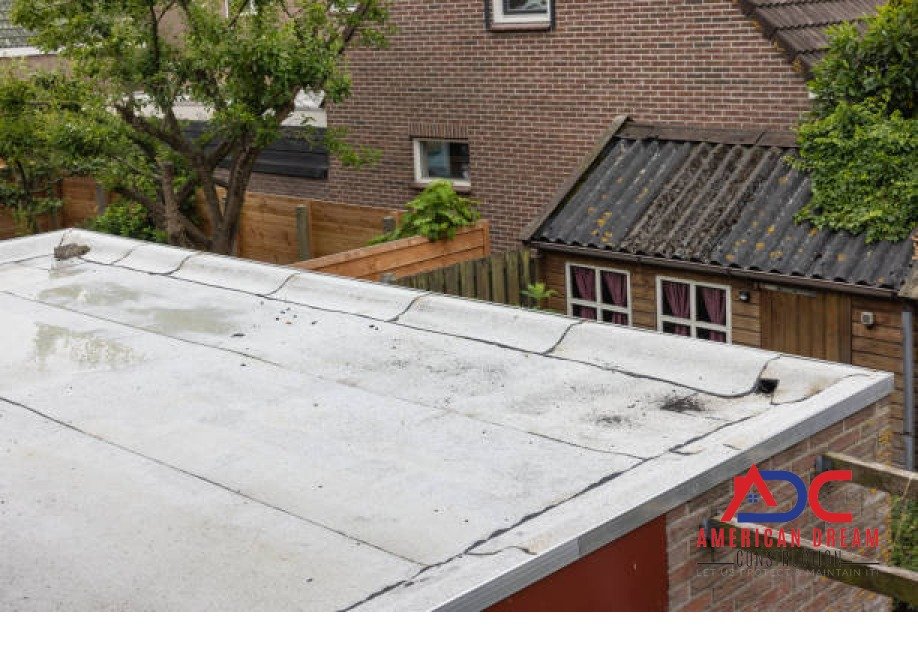
In this photo you can see a deteriorated flat roof that passed it’s lifespan.
Weather Patterns
A roofing system’s job is to protect your family or employees from harsh weather conditions from the inside.
Dealing with harsh weather can significantly reduce the lifespan and durability of a roofing material.
In some regions of Texas, you might experience blazing heat; in other places, you might experience strong winds and hurricanes.
The weather fluctuates from intense scorching heat to deadly hail storms hammering on your roof.
Yes, even the toughest Class IV shingles can get dented from this weather.
At the same time, according to the Insurance Information Institute, Texas alone experienced over 1,123 hail storms in 2023.
As a result, it led to billions of dollars in property damage.
Therefore, you should consult for an inspection after any harsh storm or hurricane.
It can help you detect damage and potential leakage before they worsen.
Also, check for debris on the roof that can affect the material.
A common hail storm event in Texas.
Style and Aesthetics
Roofing is replaced chiefly due to damage and wear, but sometimes it’s due to taste and preference.
Some homeowners prefer upgrading their roofs to fancier materials like slate, tiles, or metal.
Why is that?
It helps to make the property more visually appealing.
At the same time, it is also of massive value from a financial point of view as well.
Here is some data that proves the point much better.
According to Remodeling, a $47,000 metal roofing project adds an increased value to a property close to $25,000 in Texas.
Eventually, you can recoup half of the investment from the start.
As a result, a brand-new roofing system adds an increased value to the property.
Understanding Roofing Materials
Asphalt
Asphalt shingles are the most commonly used material in Texas and nationwide.
They are cost-effective and easy to install; any decent contractor can install them.
According to WebFX, it accounts for 64% of the residential roofing market.
It comes in three different options: 3-tab, architectural, and luxury.
But how reliable is it?
It will depend on the type of asphalt material you have chosen.
In the case of 3-tab (bare asphalt), it is estimated to last 10-20 years.
Architecture, which is more durable than 3-tab, can last 15-30 years.
Lastly, designer luxury asphalt shingles can last 50 years, depending on the manufacturer and their warranty.
Regardless, these are mere numbers and estimations.
As stated, many factors need to be considered beforehand.
But on average, with asphalt, you can expect to replace your roofing system in 10 to 20 years in Texas.

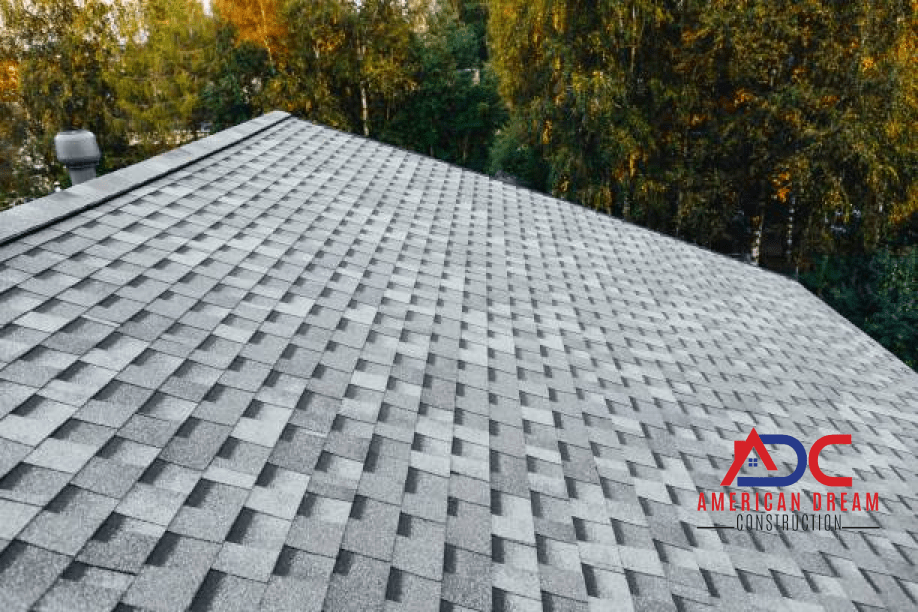
How asphalt roofing system looks like after completion.
Metal
Metal roofs are the best for Texas weather if not one of the best.
Many variants of metal roofing systems are available, but corrugated sheet metal and standing seam metal are most commonly used.
It is a Class IV-rated material, which means it can survive weather conditions such as hail, storms, and hurricanes with little to no impact on the material.
Once installed properly, your metal roofing system can last 40 to 70 years with little to zero maintenance.
Even from a visual point of view, metal is available in almost any color and style you would like to have it in.
But unlike asphalt, metal is an expensive investment.
It is two to six times the price of an asphalt roofing system.
In the long term, it is a choice that pays off very well.
If installed well, if you live in Texas, you won’t have to replace your roofing system for many decades.
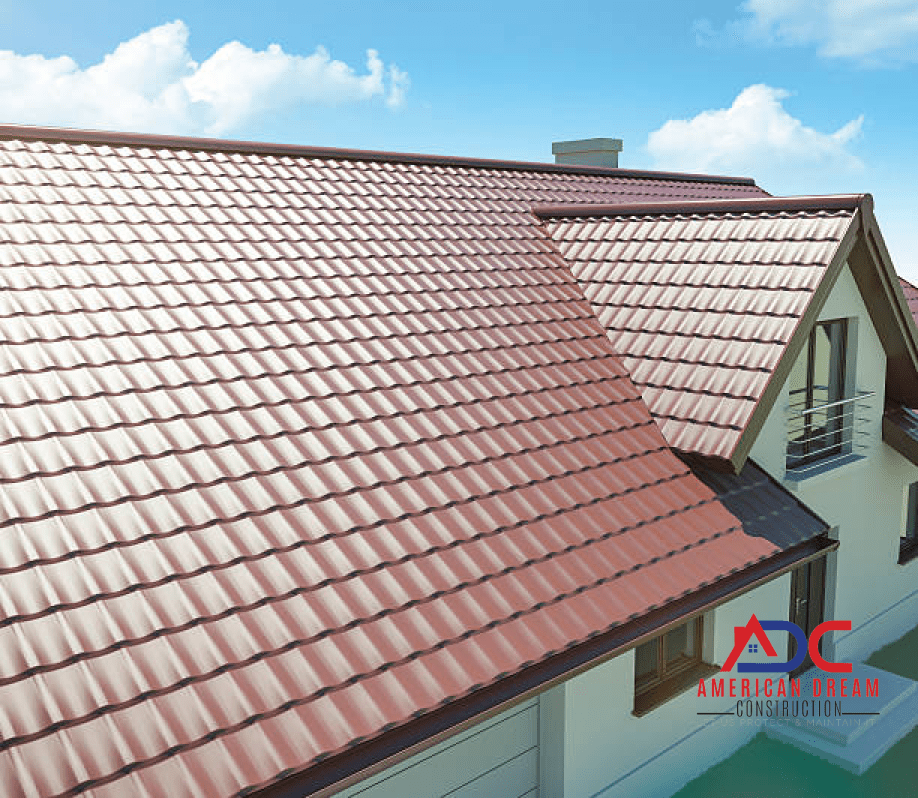
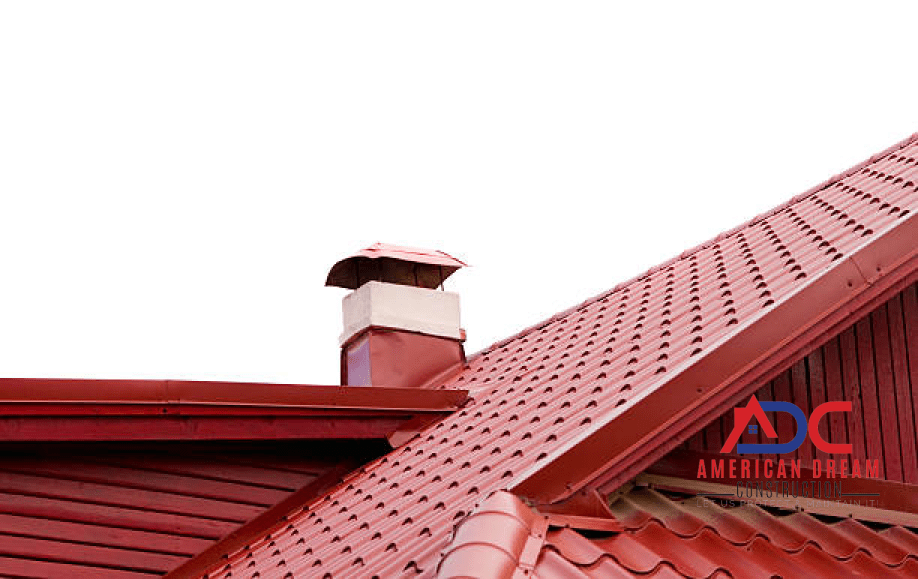
Actual representation of how standing seam (right) and corrugated metal (left) looks after job completion.
Slate
If there is a roofing material that shows timeless elegance and beauty, it is slate.
Apart from their visuals, they are also very durable.
They are highly resistant to all kinds of harsh weather elements that Texas faces.
They are commonly available in two types: natural and synthetic.
Natural slate is made from natural stones, whereas synthetic slate is manufactured.
Once installed properly, they can last as long as 80 to 100 years.
With slate, just like metal, you won’t have to replace your roof for your entire life.
But, they are an expensive investment—especially the natural slate.
However, synthetic slates are much lighter and more affordable than traditional slates.
It offers almost the same longevity and benefits. But the visual aesthetic is compromised.
They also require an experienced contractor to get the job done.
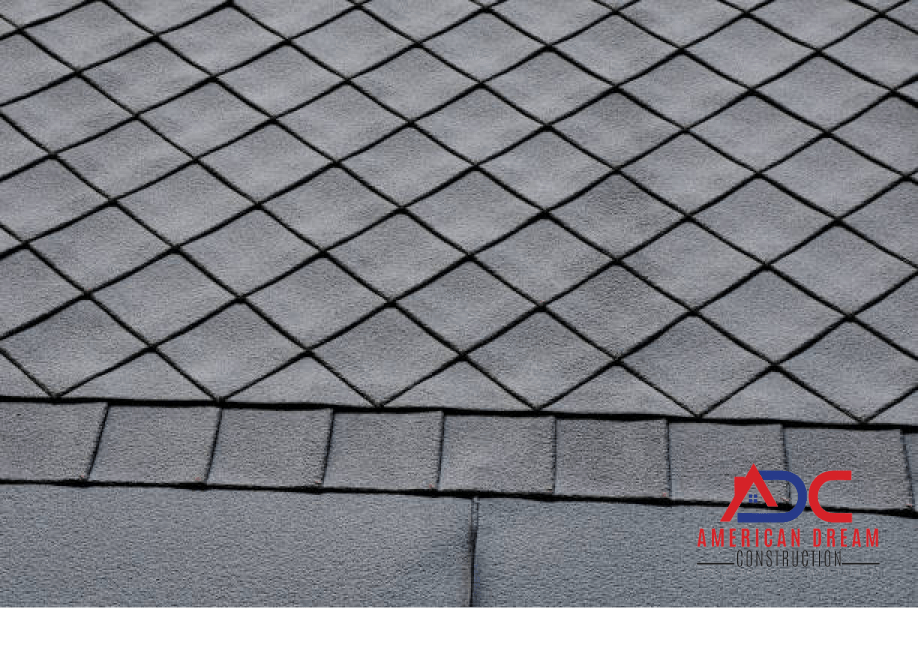
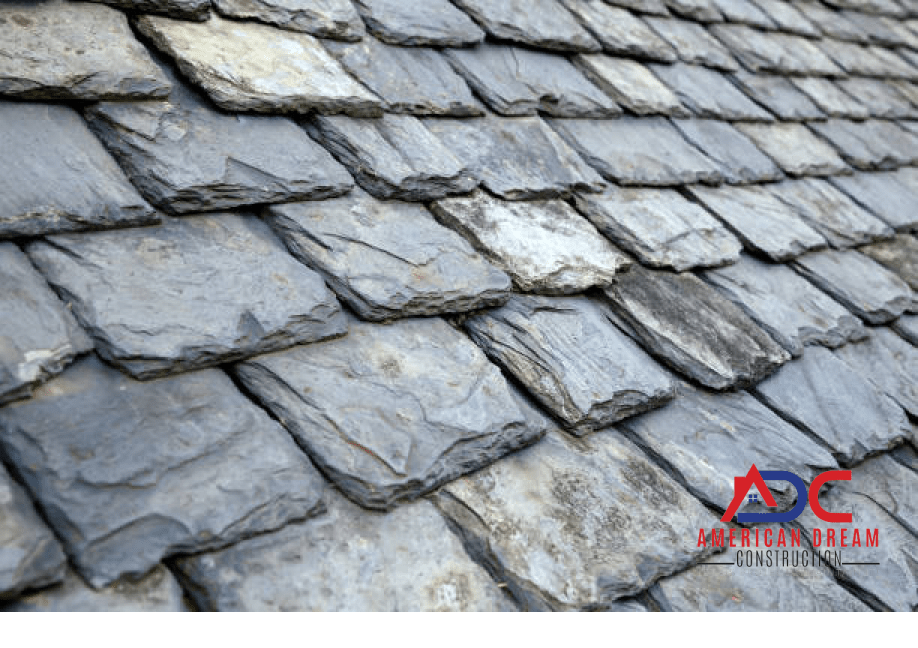
In this photo you can see the visual difference of natural (left) and synthetic (right) slate.
Tile
Tile is one of Texas’s most popular and classic material choices.
It is a solid roofing system made of tiles that fit together, fixed onto a solid base, on a sloping roof.
The material contains a rich history spanning from the 10,000 BC Neolithic Age.
Also, tiles have been around in Texas for more than 100 years now.
Traditionally, the clay orange tiles are the most commonly witnessed in Texas.
It is a premium roofing option.
You will require an experienced contractor with extensive knowledge of tile roofs.
However, once installed properly, it can last 50 to 100 years.
Of course, it will depend on the type of tile you have chosen.
You won’t have to worry about any replacement for your lifetime, like metal and slate.
They are well suited for the Texas weather, as they are durable and resistant to hail, storms, hurricanes, and strong winds.
At the same time, it can also reflect direct sunlight to make your indoor temperature cooler.
However, many other alternatives, such as composite and metal tiles, are much lighter and cost less than clay tiles.


The ancient popular orange clay tiles and new slate tiles.
Flat Roof Options
According to Long Home Products, a flat roof is any roof with a 1 to 10-degree pitch.
It may look horizontal, but it isn’t.
Flat roofs have an elevated angle that allows standing water to slide down.
It primarily consists of commercial properties that fall under the flat roofing category.
We use EPDM, Mod Bit, TPO, PVC, and SPF for flat roofs for flat roofs.
All the materials are simple and easy to install, and like asphalt, the availability of installers won’t be an issue.
The longevity of a flat roof will depend on the material you have chosen.
For example, if you have installed EPDM roofs, they can last 25 to 30 years with proper maintenance.
In the case of Mod Bit, it can last 15 to 20 years.
Proper installation means you won’t have to change your flat roofing system for the next two or three decades.

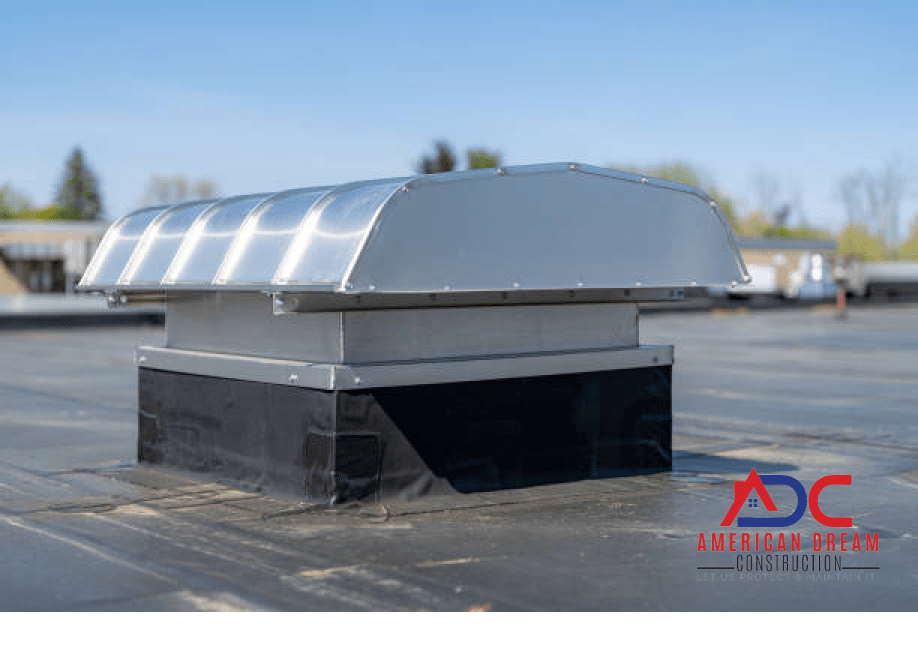
First image (Mod Bit) and Second image (Black EPDM)
When to Replace Your Roof
Missing or Cracked Shingles
In the Texas heat, materials can deteriorate faster, leading to cracks or missing pieces.
It exposes your roof to potential leaks during heavy rains or storms.
Regular inspections can help catch these issues early and prevent further damage to your home.
If the condition gets worse, you should opt for a roof replacement.
At the same time, we noticed damage to the deck in some instances, eventually leading to a complete installation job.
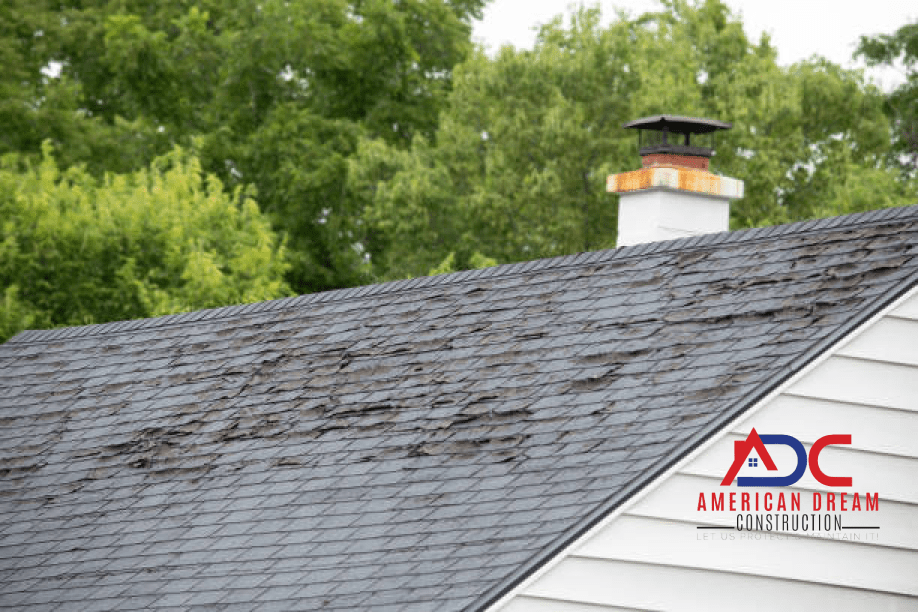

A very common scene after a hail storm or high wind event.
Algae and Moss
The humid climate in Texas provides the perfect breeding ground for algae and moss growth on roofs.
Besides being unsightly, these organisms can cause damage by trapping moisture and accelerating roof decay.
Regular cleaning and maintenance can help prevent this issue and extend the life of your roof.

The aftermath of full-grown algae on a roofing system.
Exceeded Lifespan
Roofs in Texas typically have a 20-25-year lifespan, depending on materials and weather conditions.
If your roof has surpassed this timeframe, it is better to consult for an inspection.
After the inspection, if the roof is nearing its lifespan, it might need to be replaced.
Conclusion
Therefore, many factors come into play when deciding how often to replace your roofing system in Texas.
However, we hope this blog post from ADC has uncovered all the essential details you should know before investing in your roofing system.

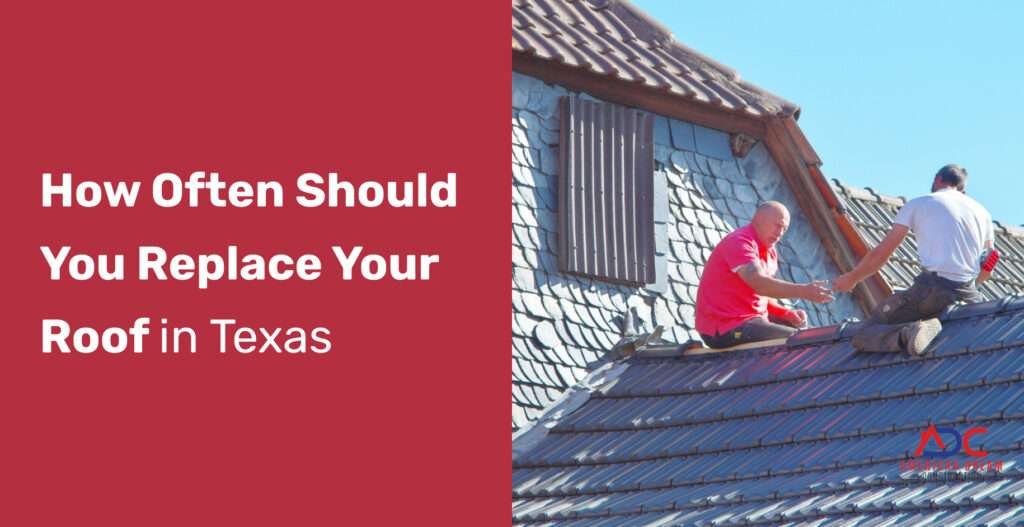
Awesome post! Thanks for sharing the knowledge and keep up the good work.
This is a helpful resource for Texas homeowners looking to understand roof replacement timelines. The lifespan breakdowns for different roofing materials, like asphalt lasting 20-30 years and metal roofs potentially lasting up to 70 years, are very informative.
The article mentions that severe weather conditions in Texas can impact a roof’s lifespan. Could you elaborate on some of the specific signs of weather damage that Texas homeowners should watch out for? For instance, would there be noticeable hail damage or specific windblown debris that might indicate compromised shingles?
Knowing the warning signs of weather damage can help homeowners identify potential problems early on and avoid more extensive repairs down the line.
Hi, I’m Jack. Your website has become my go-to destination for expert advice and knowledge. Keep up the fantastic work!
Normally I do not read article on blogs however I would like to say that this writeup very forced me to try and do so Your writing style has been amazed me Thanks quite great post